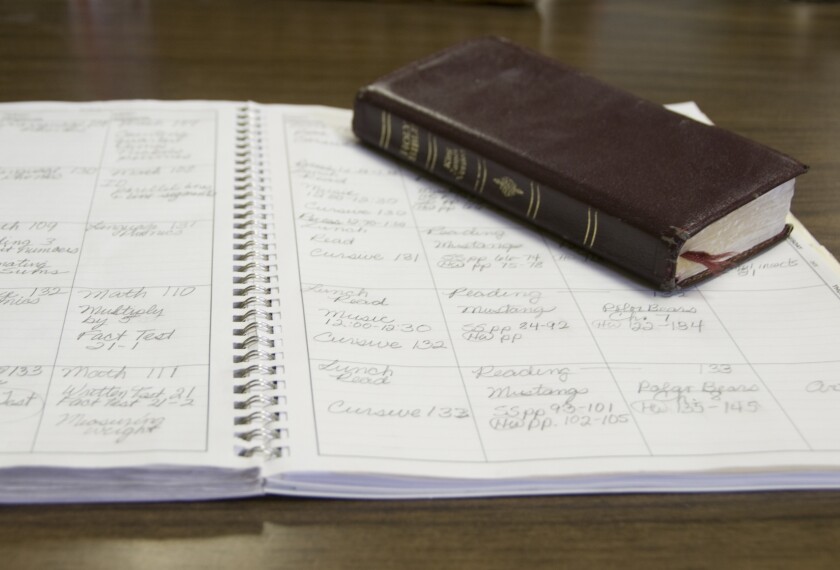“You can be the ones to change the way we live,” I unreservedly preached to my 6th grade students.
And I didn’t mean “when you grow up.” Or “one day.” Or even “next year.”
Students don’t wait until adulthood to start living. There’s no reason they should wait to start engaging purposefully with their communities, either. After all, they’re brimming with motivation and innate talents. They’re kind, eager, and creative—just what our world needs.
In the pilot year of our “social-change project,” my students planned and carried out projects to benefit their community. Whether helping an elderly neighbor tame her yard, teaching a frightened 5 year-old how to ride her bike, or researching and designing a cookbook for diabetics, they learned about everything from time management to networking to how to collaborate with their peers.
And I learned plenty, too—lessons that will make the project even more successful this next year. Here are the major steps.
Set out the challenge clearly.
In order to ignite the fire and help my students grasp what is possible, I showed a about a young boy who fundraised to help curb child slavery. The video showcased a possible approach (fundraising for those in need) and provided students with a glimpse of proper presentation skills. I made it clear that students would be putting their own social-change project into practice, just like in the video.
The task for students was to decide at what level they’d try to make an impact on society—at the level of their friends, family, school, town, state, nationally, or internationally. Their next step was to choose a topic and to decide whether to work solo or with a small group of one or two other students.
During this pilot year, I gave students a blank slate when it came to determining the goals of their projects. Many took the “go big or go home” mentality and later felt the slap in the face of reality. But their struggles produced some effective learning experiences: understanding how to plan both short and long term, realizing that a lot of ideas take money, and concluding that it’s hard to delegate teamwork without an appointed leader.
This year I’ll begin the unit by sharing some “starter ideas"—including some topics that are narrower and others that are broad. But I’ll make sure to tap my students’ ideas and input, too—after all, these personal passions give the project intrinsic value (and students often have bold, exciting ideas!).
Be on the watch for projects that involve fundraising or donations, and figure out how you want to handle these. During the pilot year, some groups of students wanted to do multiple food drives across several weeks at the school. Local agencies benefited. That said, I decided that this year, there would be only three slots for at-school fundraising activities, decided on a first-come, first-served basis and assigned to certain dates. Students can raise funds outside of school, but I will make it clear that they are the sole proprietors and distributors over funds raised.
Develop a plan with checkpoints throughout.
Proposing a set of questions at the onset of the project can help students set goals. Here are some questions I will ask students to answer as they complete their planning guides:
• What would I like to accomplish by the end of the project?
• Who can help me accomplish my project?
• Where do I need to go?
• What are my short-term goals?
• How will I know I accomplished my project goal?
• What do I need to do in order to start?
As students start acting on these ideas, they need checkpoints to keep them on track. This year I’ll be scheduling end-of-week check-ins, during which students will provide a summary report of their accomplishments and next steps. This will also be a time when we can talk through any questions or barriers.
Encourage self-reflection throughout the project.
This project gets to the heart of personal narrative: telling the story of creating and taking action in your life and community.
From the very start of the pilot project, students keep a chronological journal of their thoughts, emotions, questions, frustrations, and most importantly, accomplishments. Their best entries, not surprisingly, tend to occur on days when they produce something tangible or make significant strides.
Not every day brings a major accomplishment, though. And during the pilot, some students recorded nothing during less glamorous phases. I want to make sure students understand that the processes of making decisions, planning, and adjusting as needed are also important (and can prompt different kinds of insights). During these seemingly less productive phases, I’ll ask targeted questions: “What are your barriers right now? How can you tell you are on track? Are there any areas that you need to adjust or change?”
Include a capstone presentation.
During the pilot, students knew they were building a timeline they would eventually present to their peers via PowerPoint, Prezi, an old-fashioned poster board, or some other form of artistic expression. I required them to visually represent eight to 10 critical days in their project with an image and brief description. Early on during the pilot project, I provided students with the rubric I would use to assess their presentations. This year, I plan to add an opportunity for students to capture video of their practice runs, so that they can feel even more confident when it’s time to present.
It’s a travesty to delay students’ understanding of how they fit into and can contribute to their communities. I’ll be honest: Leading my students in brainstorming, planning, executing, and presenting the results of their community engagement had its challenges. But by the time all 100 had shared their lessons learned, I was captivated and convinced. I can’t wait to see what this year’s students accomplish—and what they learn about themselves as a result.
Ever tried a project like this one? What tips do you have?




